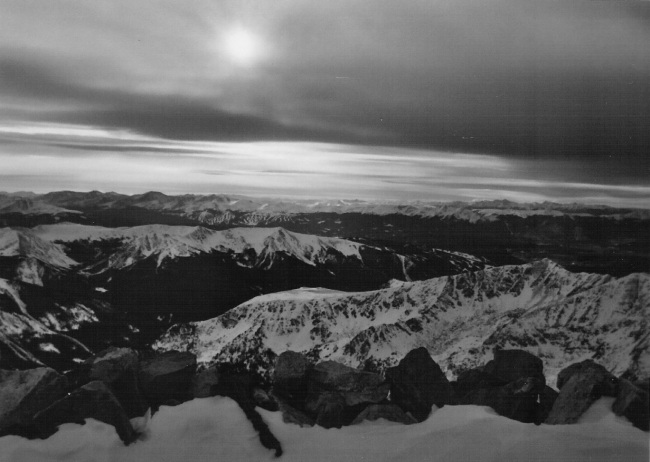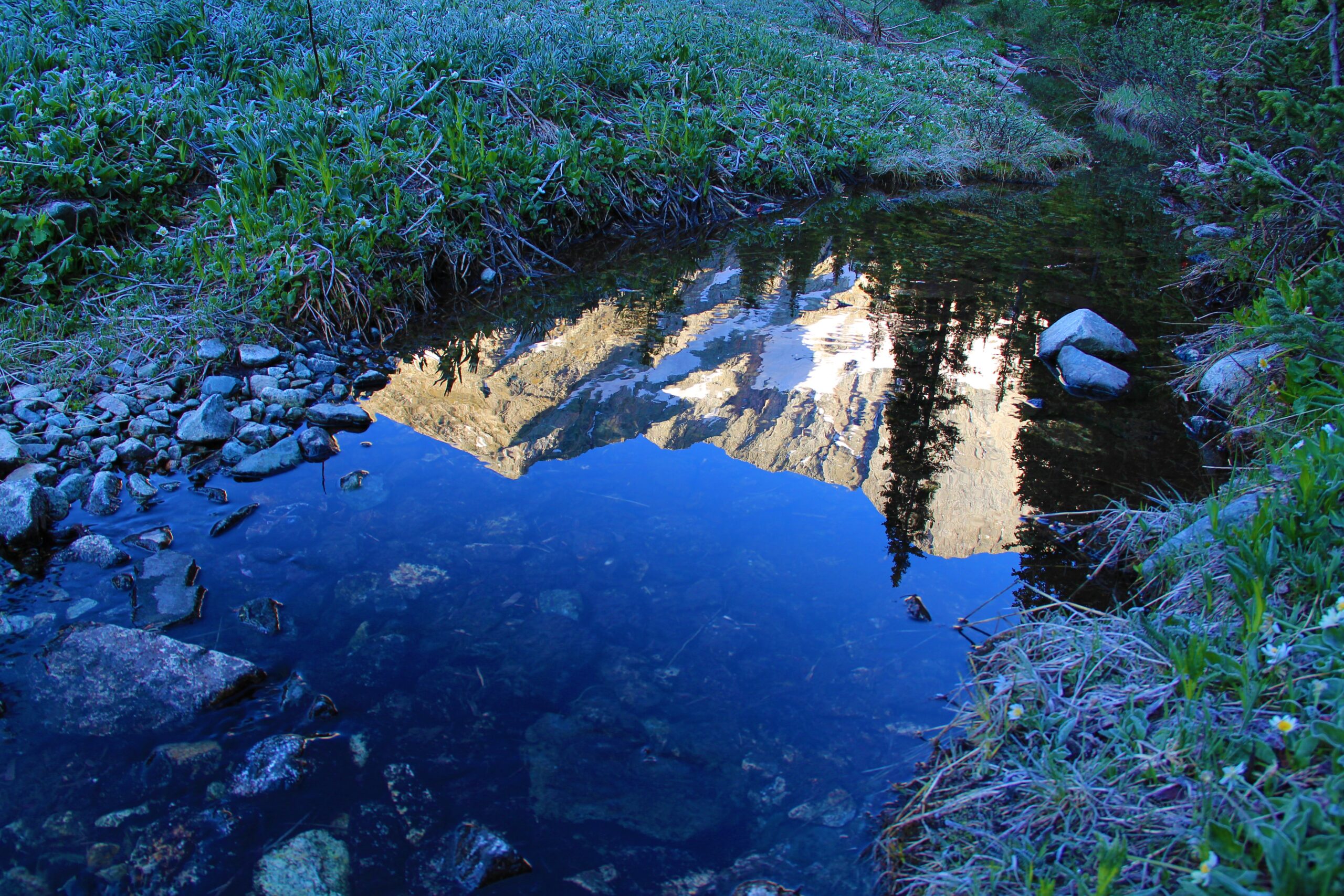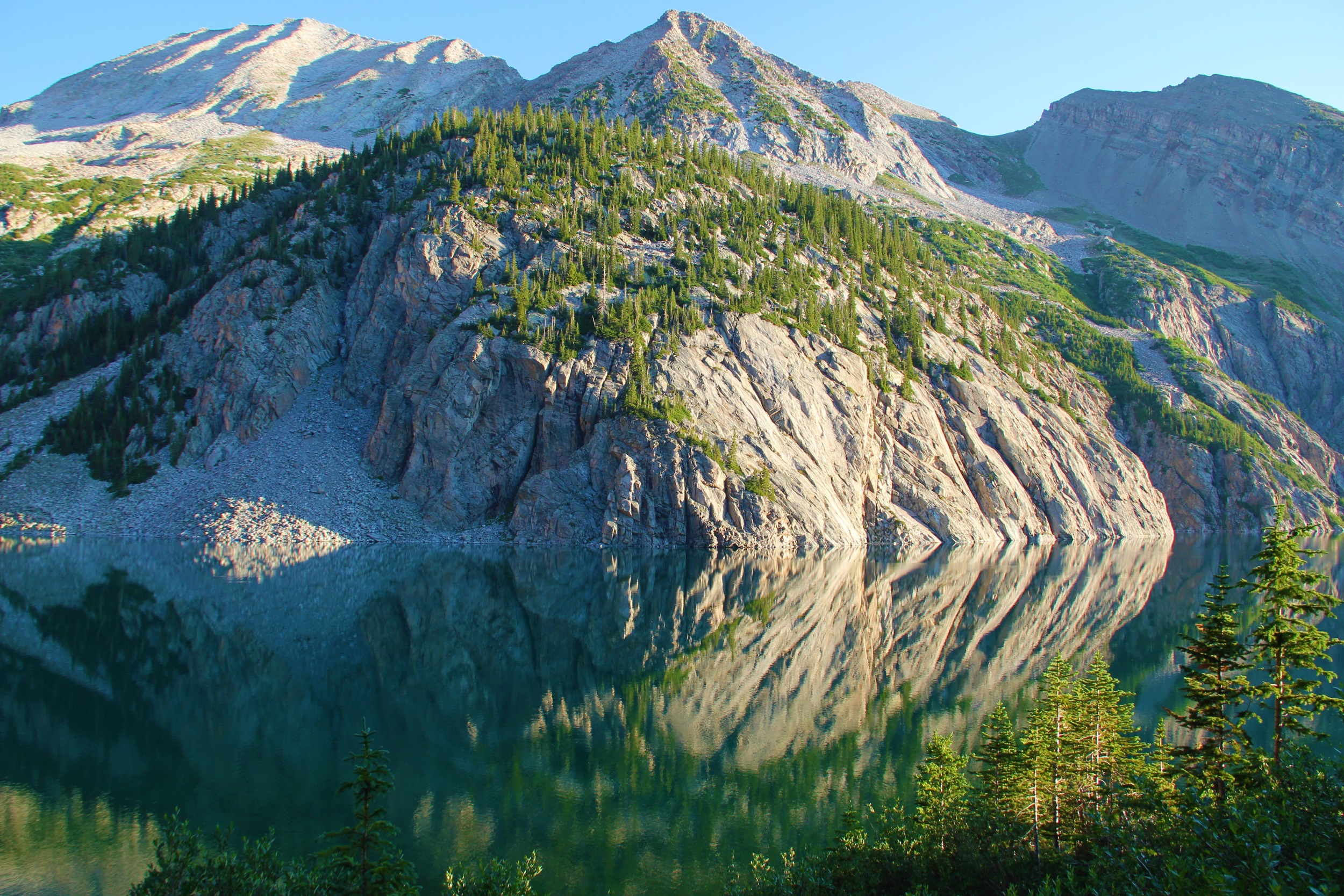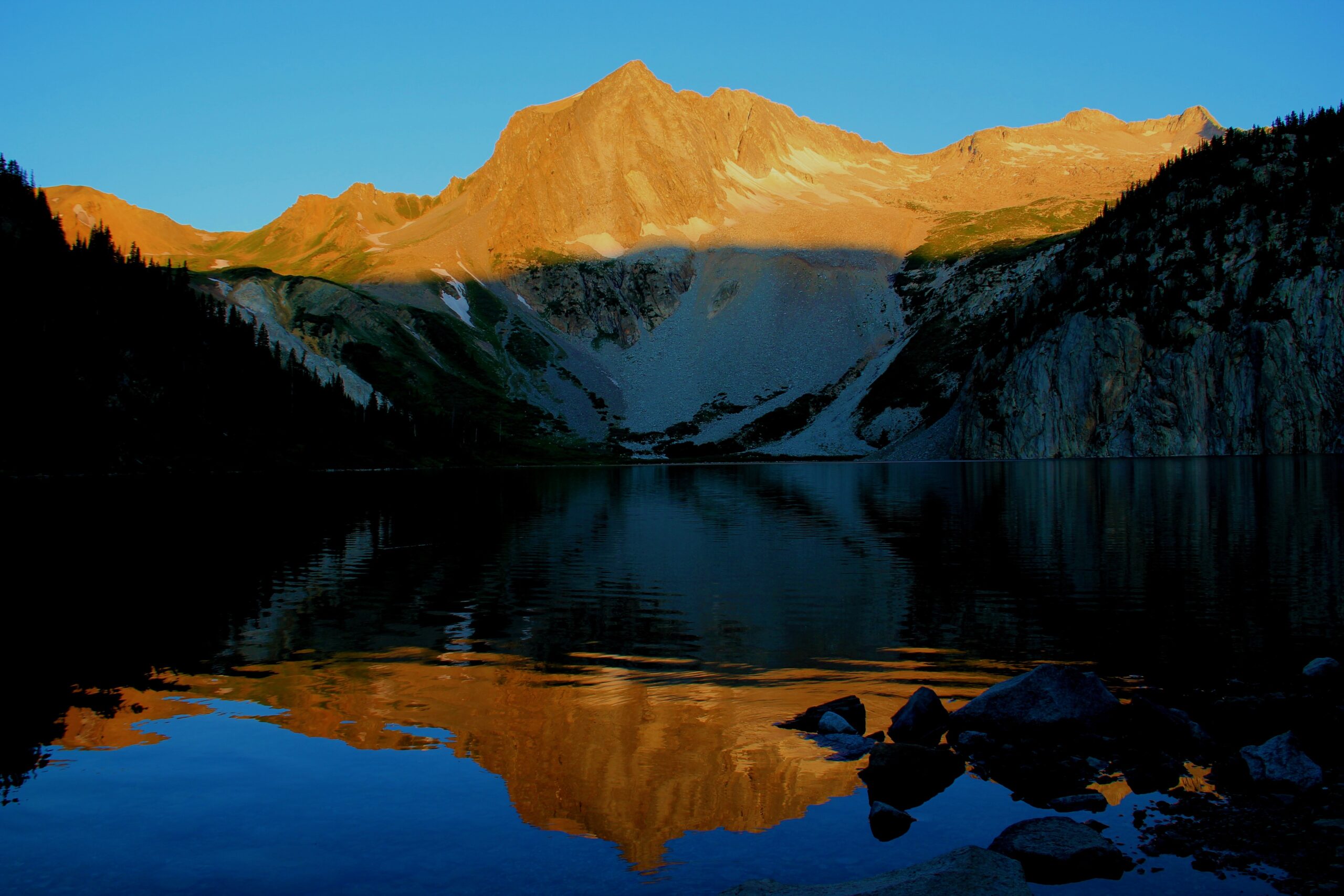
Colorado 14ers: More than a tick-list
The 58 Fourteeners
It is no secret that summiting all of Colorado’s 58* fourteeners has become an increasingly popular goal in recent years. It is also no secret that some in the climbing community malign this idea as a ‘peak-bagger’s’ tick-list promoting altitude over quality climbing. I joined the quest unknowingly in late November 2003, from an entirely different perspective. Having grown up on the east coast and spent nearly all my time there, I was excited just to see the Rockies when the Army saw fit to station me in Colorado. Wanting to experience the mountains first-hand, I charged up the first ‘rocky mountain’ I found–Grays Peak–and experienced the most exhausting day of my life to that point. I was ill-prepared for the full winter conditions, and I learned a handful of lessons that day that would stick with me.
But one other thing I would not soon forget was the view from the summit. The sea of snow-covered mountains stretching to every horizon below me was unlike anything I had ever witnessed. Had I not been so beaten by the altitude and the stinging wind, I might have thought I was in Paradise.
Before I knew it, I was hooked.
One of my favorite mountain moments: sunrise from Browns Peak, en route to Huron Peak
When it comes to the fourteeners, I agree with the skeptics on a couple of counts: a few of the mountains on this list are not of exceptional quality, and dealing with crowds can be a chore not desired by the average wilderness-seeker, myself included. Over the years, however, I have taken to climbing non-standard routes of the fourteeners, climbing in winter, and even climbing in the dark to watch the sunrise from some of Colorado’s highest perches. I cannot speak for anyone but myself, but for me, it has always been worth the effort.
The Palisades of Longs Peak, with Mount Meeker in the background, during a winter sunset.
“It’s not getting to the summit that’s important, it’s getting back down.”
Finale
Fast-forward to July 1, 2012. Many mountains and lessons later, I find myself standing at the base of my final Colorado fourteener: Snowmass Mountain. I chose this mountain because I wanted to share the best parts of the fourteener experience: fantastic scenery, a multi-day backpack, camp in a wilderness lake-side setting, snow, wildflowers, and a scramble to the summit. My hiking companions are my Dad–Steve, and my Uncle John. Both in their sixties, they hike regularly and are easily in better shape than most thirty-year olds I know. I feel confident in our abilities to reach the summit, but you never know what a fourteener might throw at you on any given day, so I’ve included a third day in the itinerary, just in case, in line with our mantra:
“Control what you can control; prepare as best you can for everything else.”
Day one’s approach is hot, but with the statewide scorching temperatures we can at least be thankful this is one of the few areas in Colorado not currently experiencing some of the state’s most damaging wildfires in recent history. In fact these lower woods of the Maroon-Snowmass Wilderness are green and lush. I find myself, as with most hikes, paying attention at first to the small: the occasional flower, the crystal clear water of the creek flowing next to us, the aspen grove with striking white bark, truck-size square boulders randomly sitting along the trail as if they’ve been there forever. Then the scenery begins to grow larger: dramatic white and maroon-colored cliffs to our left, than a waterfall to our right, and above it–our first view of Snowmass Mountain, towering above everything.
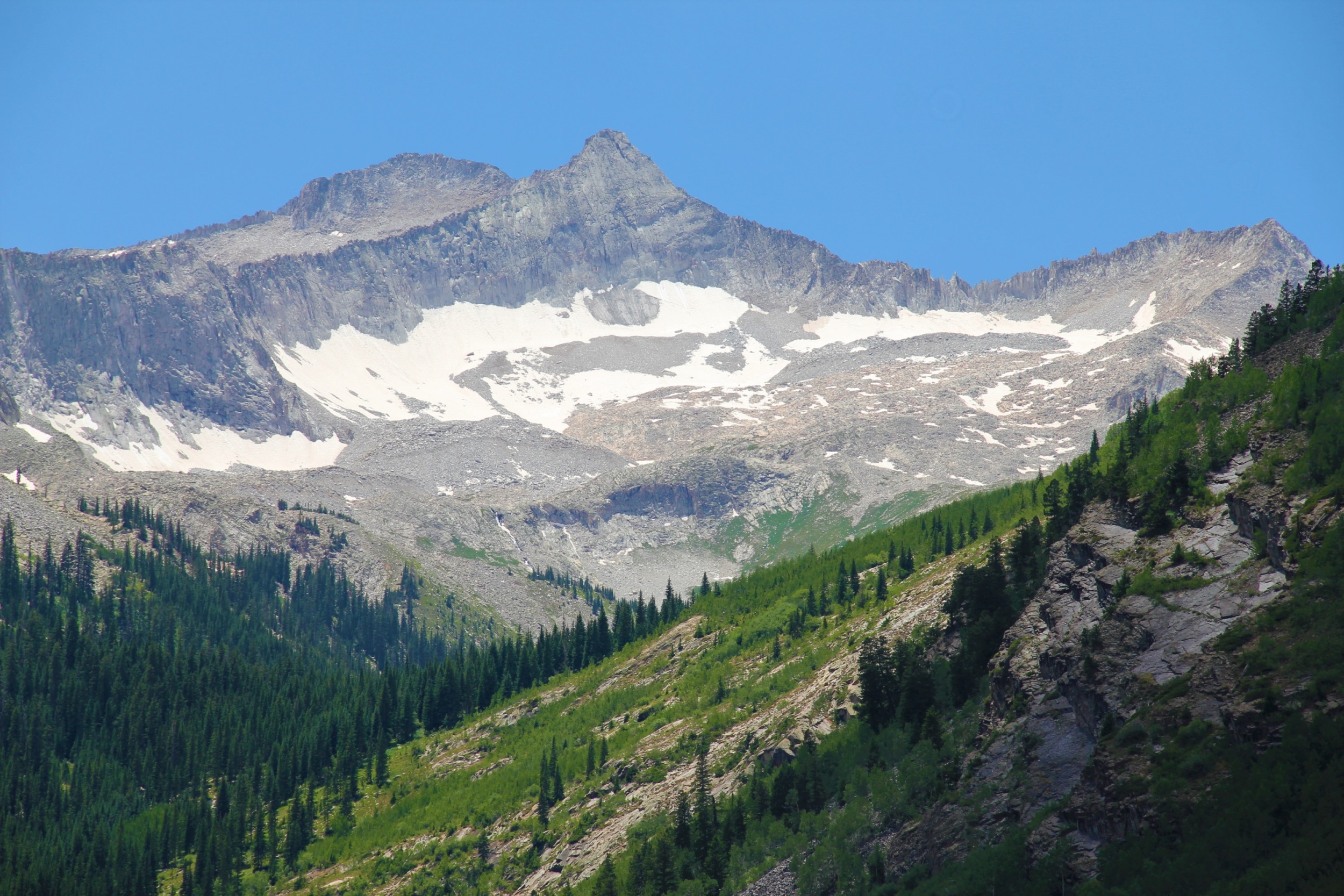
It has been a dry year, so the logjam is easily cross-able, but still it is a feature unique to this hike out of all the fourteeners.
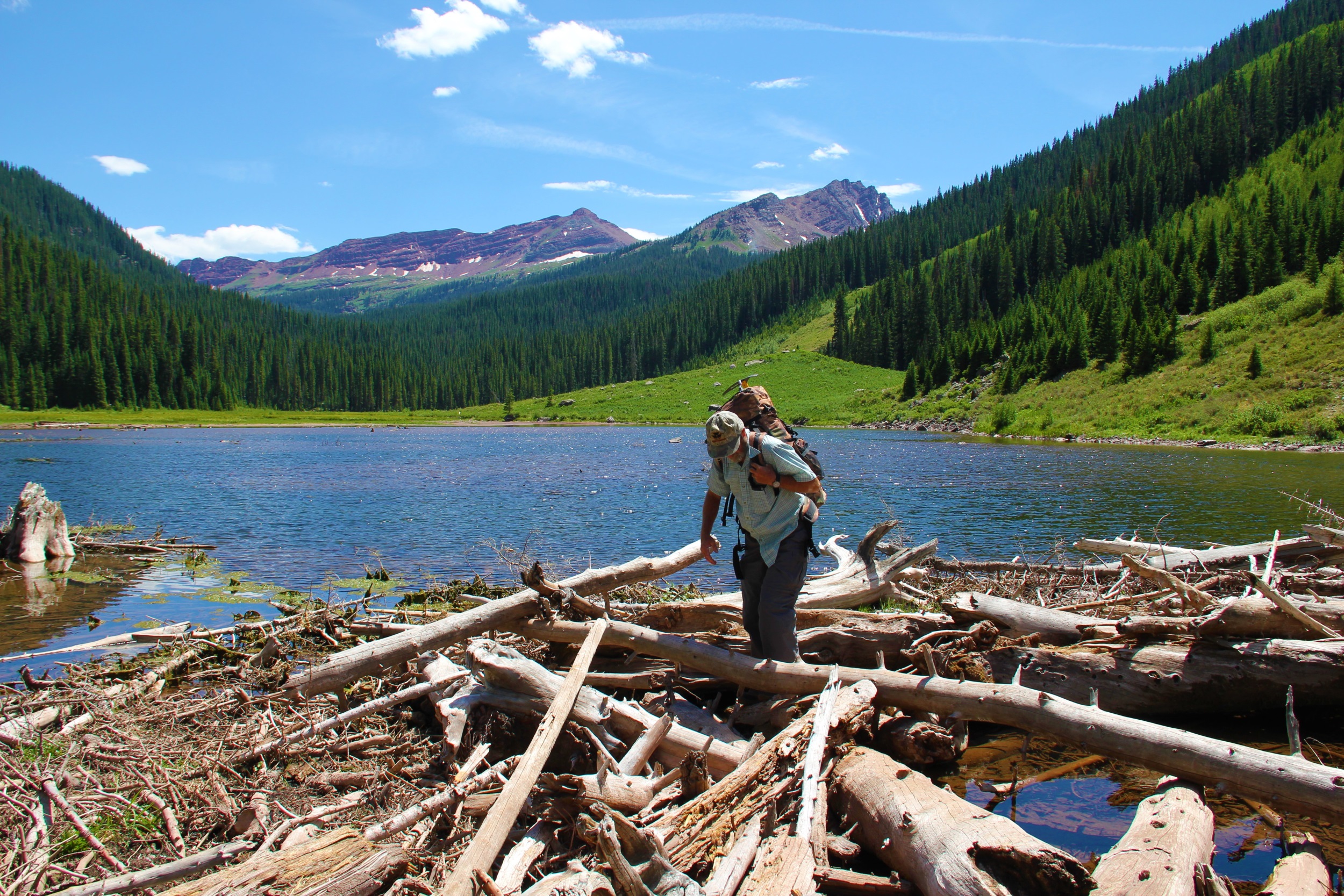

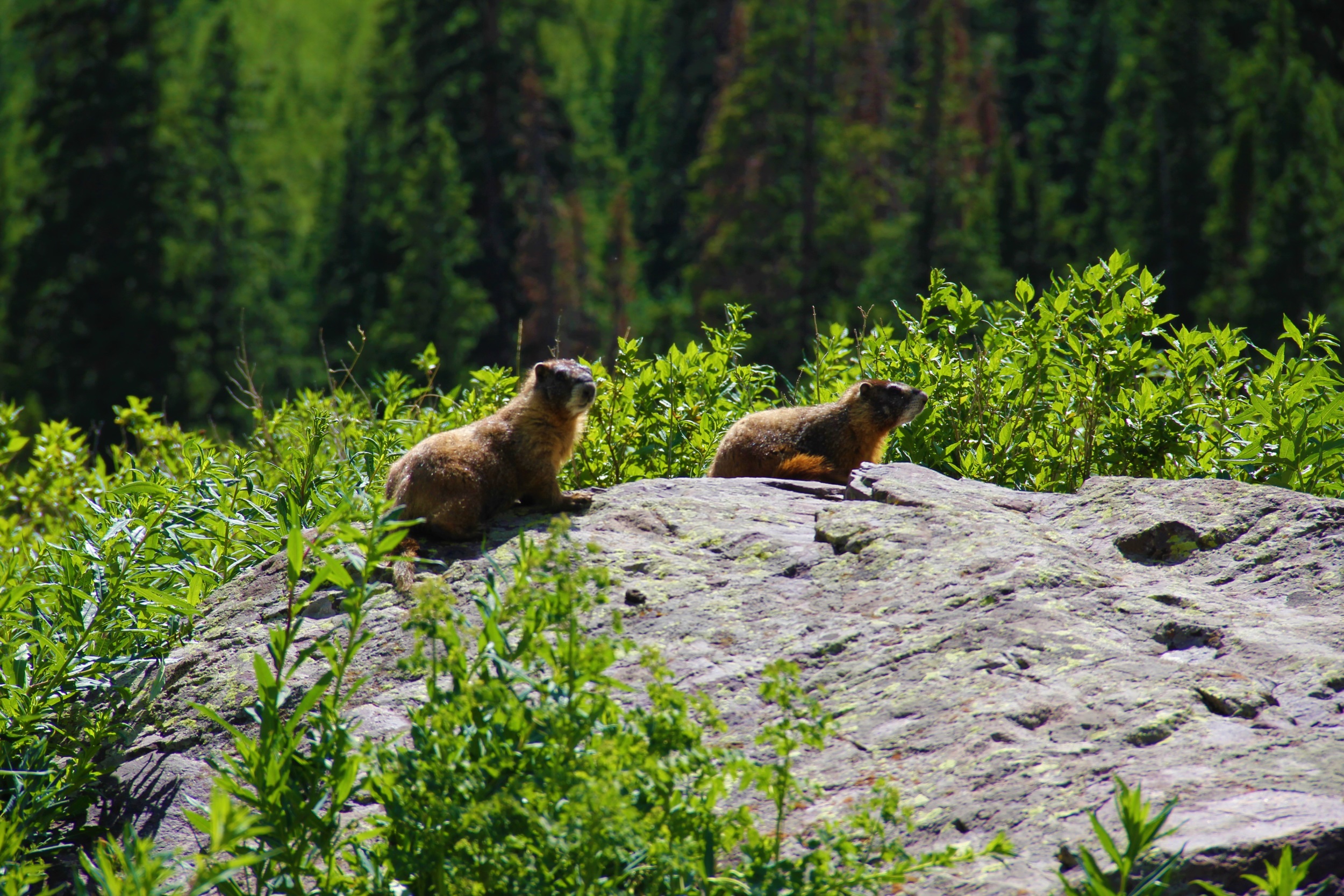
By the time we reach Snowmass Lake, with the in-your-face view of Hagerman and Snowmass, my appetite is whet for altitude, and the increasingly expansive views that accompany it as we move higher. But first, it is time to set up camp and spend the evening at this special corner of the universe.
Day two: clear blue skies and relatively calm air provide me with something I’ve looked forward to since beginning the fourteener quest: a chance to photograph Snowmass Mountain’s reflection in its namesake lake. After the mandatory photo shoot and breakfast, it is time to begin the final ascent.
Willow-bashing around the lake is followed by talus hopping for a while, but as we climb toward 12,000 feet the talus turns to steep, useless scree. A better trail lies on the steep grassy slopes to our right, and before we know it we are enjoying high alpine meadows, with a surprisingly abundant variety of wildflowers.
Because of the aforementioned dryness, the “snowmass” is already long gone by this July 2nd–well ahead of its normal melting season. There are some patches of snow, but for the most part we prefer working our way up the smooth slabs and boulders to 13,000 feet.
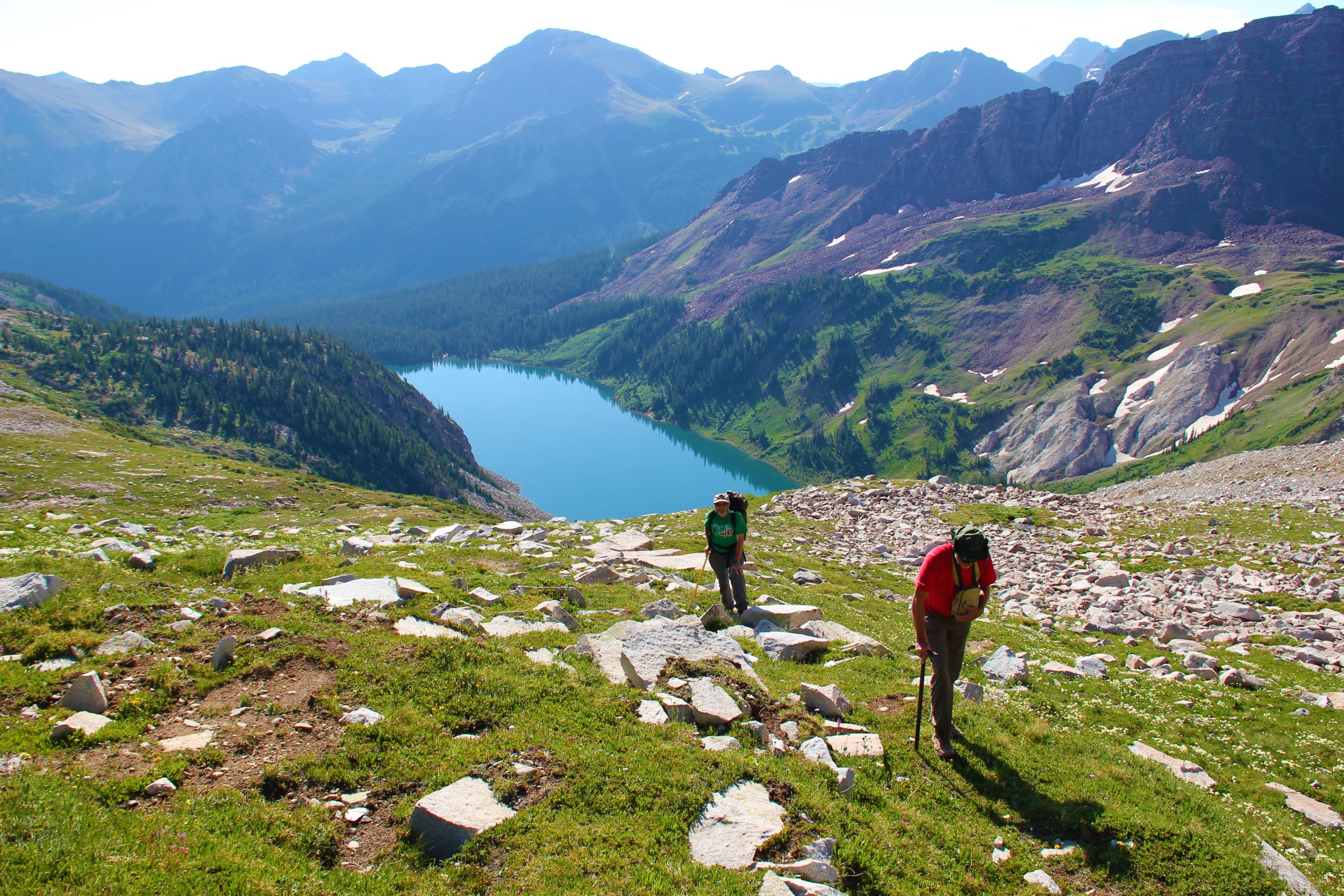

 To gain the ridge, we take neither the standard snowmass approach nor the notch variation near the summit; instead we aim for the middle of the ridge–which is a good way to go except for one dicey, loose and steep third class pitch. This got us paying attention, and ready for the final push to the summit. The jagged ridge we have arrived at surely is a wild place in the middle of this beautiful wilderness.
To gain the ridge, we take neither the standard snowmass approach nor the notch variation near the summit; instead we aim for the middle of the ridge–which is a good way to go except for one dicey, loose and steep third class pitch. This got us paying attention, and ready for the final push to the summit. The jagged ridge we have arrived at surely is a wild place in the middle of this beautiful wilderness.
 At 13,900 feet, I am pumped. I take a minute to calm down as we watch two fast climbers above us, rounding the final bend to the summit. A few minutes later, we are following their moves around the final boulders to the top. I love the airy final steps to the summit block, and I make it a point to tell my dad and uncle not to step too far.
At 13,900 feet, I am pumped. I take a minute to calm down as we watch two fast climbers above us, rounding the final bend to the summit. A few minutes later, we are following their moves around the final boulders to the top. I love the airy final steps to the summit block, and I make it a point to tell my dad and uncle not to step too far.
 The two climbers who were ahead of us are just detouring for the day to climb Snowmass, in the middle of a four-day trek around the Elk Range’s popular four-pass loop. We talk a few minutes before they head back down, and then we have the summit to ourselves for the next hour.
The two climbers who were ahead of us are just detouring for the day to climb Snowmass, in the middle of a four-day trek around the Elk Range’s popular four-pass loop. We talk a few minutes before they head back down, and then we have the summit to ourselves for the next hour.
My goal was to stand on the true summit, a six-foot spire with an uneven top, but my cheap shoes had decided to come apart to the point that I could not trust them for any balance or grip. So, I climb up onto the spire and grip it with three points of contact for some awkward summit shots. My shoes, by the way, are being held together by twine, and my feet will be my silent source of torture the entire trek out of the mountain, but I am not alone in my suffering–Uncle John slept all of a half hour the night before. But if climbing fourteeners was comfortable, everyone would be doing it.
 What’s important is that none of us are feeling any altitude sickness–this is one of my few times above 14,000 feet that I have no headache–and the weather is amazing. Though clouds are building, the air is warm and there is no breeze whatsoever. We take advantage of our solitude, snap numerous photographs, and enjoy this special perch in the middle of my favorite Colorado mountain range.
What’s important is that none of us are feeling any altitude sickness–this is one of my few times above 14,000 feet that I have no headache–and the weather is amazing. Though clouds are building, the air is warm and there is no breeze whatsoever. We take advantage of our solitude, snap numerous photographs, and enjoy this special perch in the middle of my favorite Colorado mountain range.


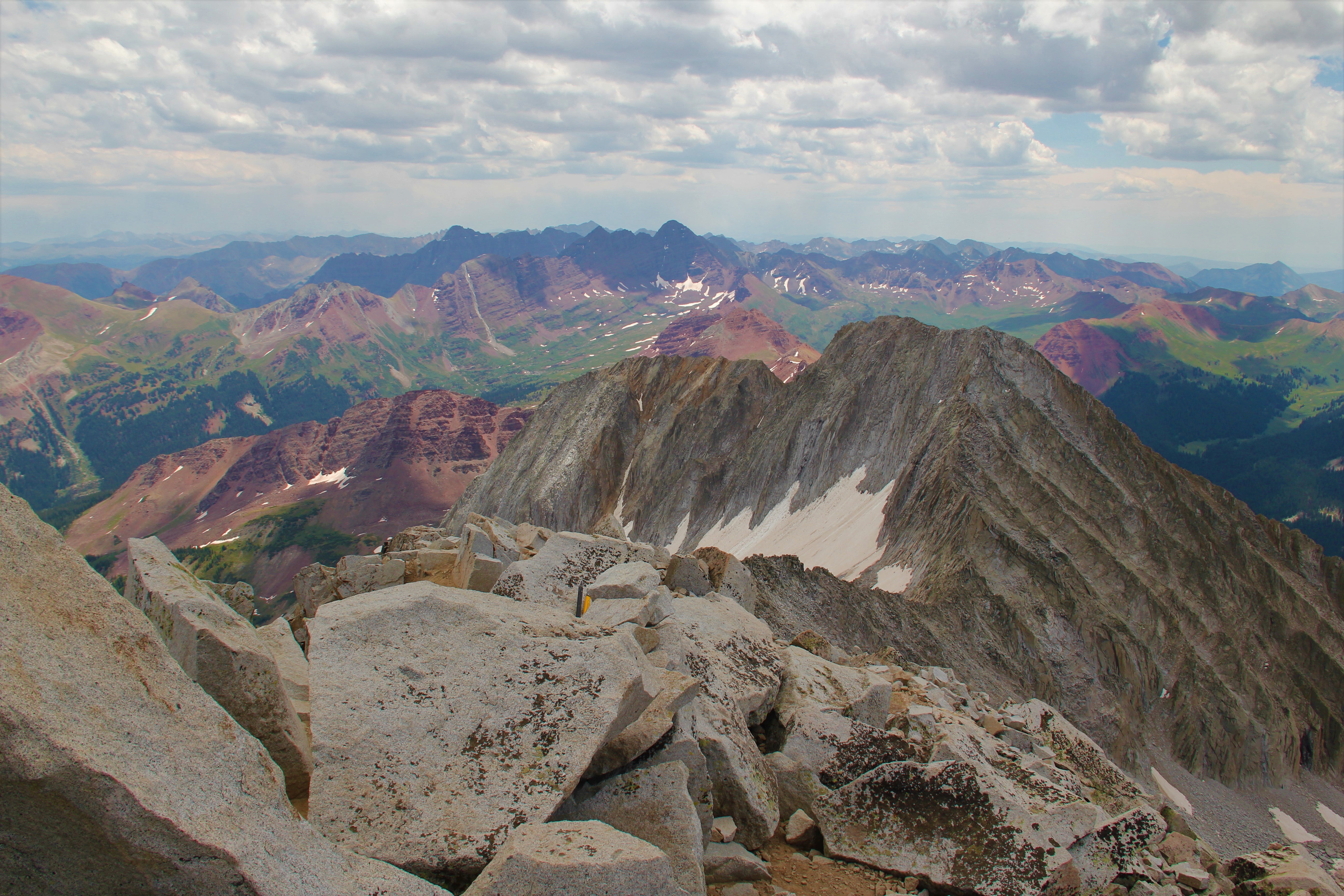 To descend, we follow the ridge lower to the standard “snowmass” route, though there is no snow here today. The talus is easy to descend, but as we get lower in elevation the weather begins to turn. Fortunately the storminess stays out of our way, except for some showers. The light rain is nice and cooling in the midday heat–even at 13,000 feet. Confident the storms have passed us by, we stop to fill up all our bottles at a gushing high altitude spring.
To descend, we follow the ridge lower to the standard “snowmass” route, though there is no snow here today. The talus is easy to descend, but as we get lower in elevation the weather begins to turn. Fortunately the storminess stays out of our way, except for some showers. The light rain is nice and cooling in the midday heat–even at 13,000 feet. Confident the storms have passed us by, we stop to fill up all our bottles at a gushing high altitude spring.
The real misery comes when we have to willow-bash back to camp. Turns out there was just enough rain to hang on every single willow leaf. I lead the way, ducking down and stomping through each wall of willows as fast as I can, but by the time we get to camp we are all drenched and cold.
We change into some drier clothes and eat an energy snack at camp, and though it is already 5:30pm, it is decided we need to pack up and head out. Just before 9:30 we arrive at the trailhead, ready to return to civilization.
Prelude… Again
But it does not end here, of course. I am not alone in finding the relatively gentle slopes of Colorado’s fourteeners to be my gateway drug to the world of mountaineering in general. Many learn the same way I have learned, by trial and error on just a handful of these sometimes deceptive gentle giants, before moving on to bigger, more exciting challenges. And who can blame them? There are hundreds and thousands of exceptional climbing routes and mountains all around the world. I too am always chomping at the bit for my next taste of mountaineering in many of these fantastic places. But in the meantime, I would not be satisfied until I set foot on each of these 58 summits, the goal I set for myself after visiting the Decalibron in 2004. After all, what lover of nature’s beauty can deny enjoying the 360-degree view from the highest point around? With the summit of Snowmass Mountain, I closed that chapter of my journey, but I can’t wait to see what lies around the next bend. I might just have to make another list.
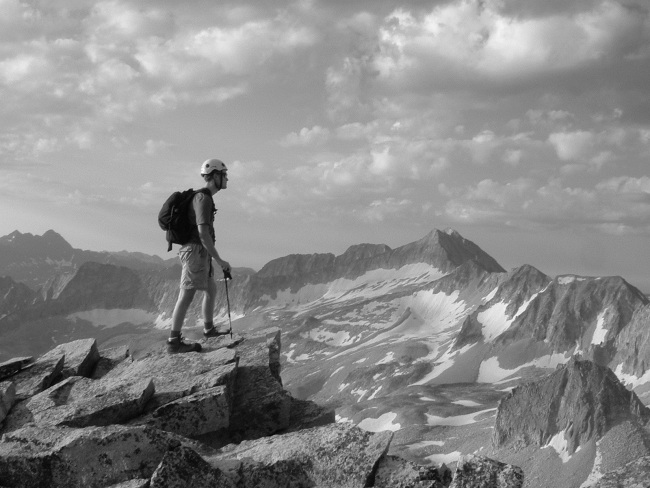
*This is always a source of debate. My list of 58 includes the 53 ranked fourteeners (which is yet another source of debate… but moving on…) and the 5 unranked-but-officially-USGS-named fourteeners: North Maroon Peak, Mount Cameron, Conundrum Peak, El Diente, and North Eolus.

